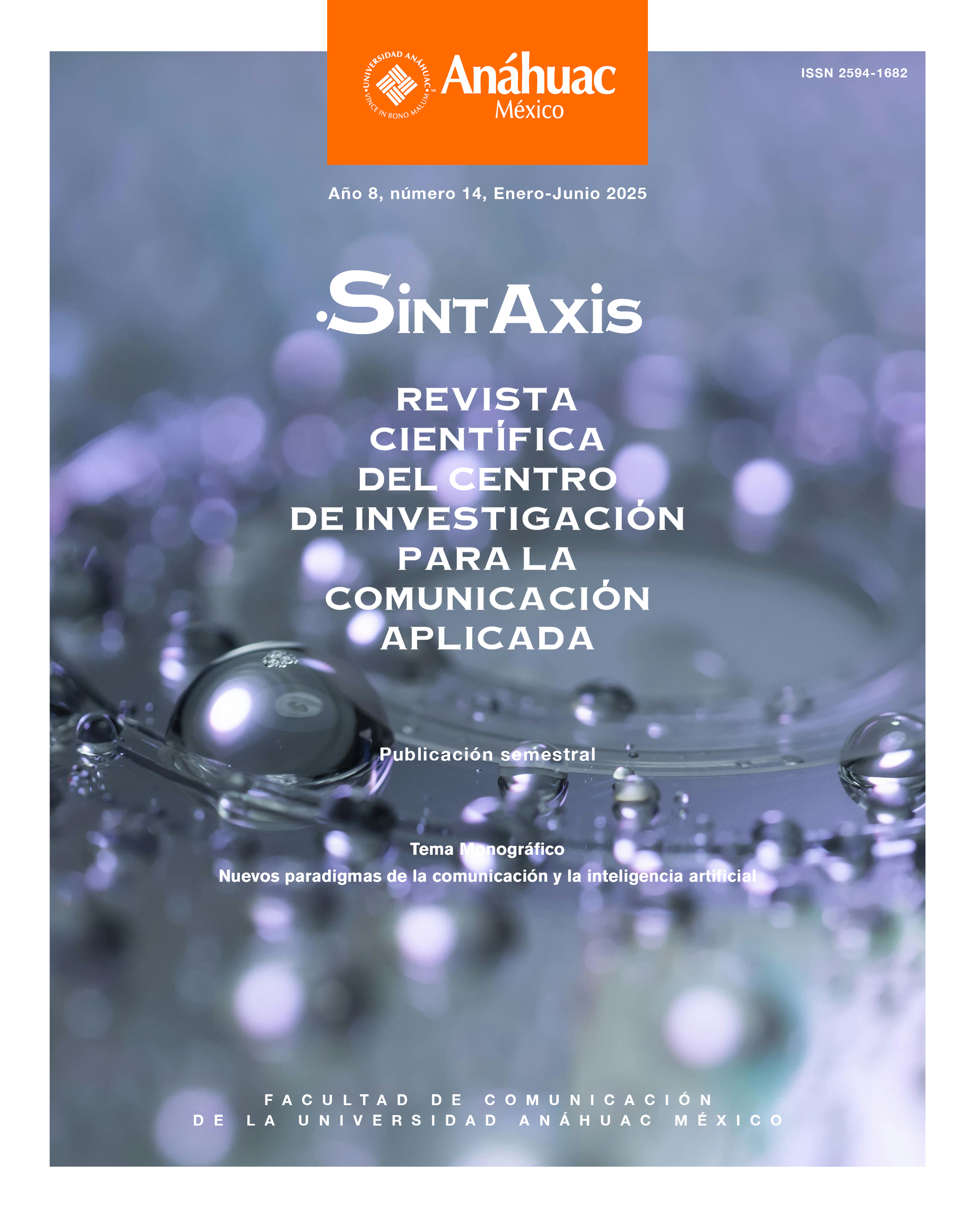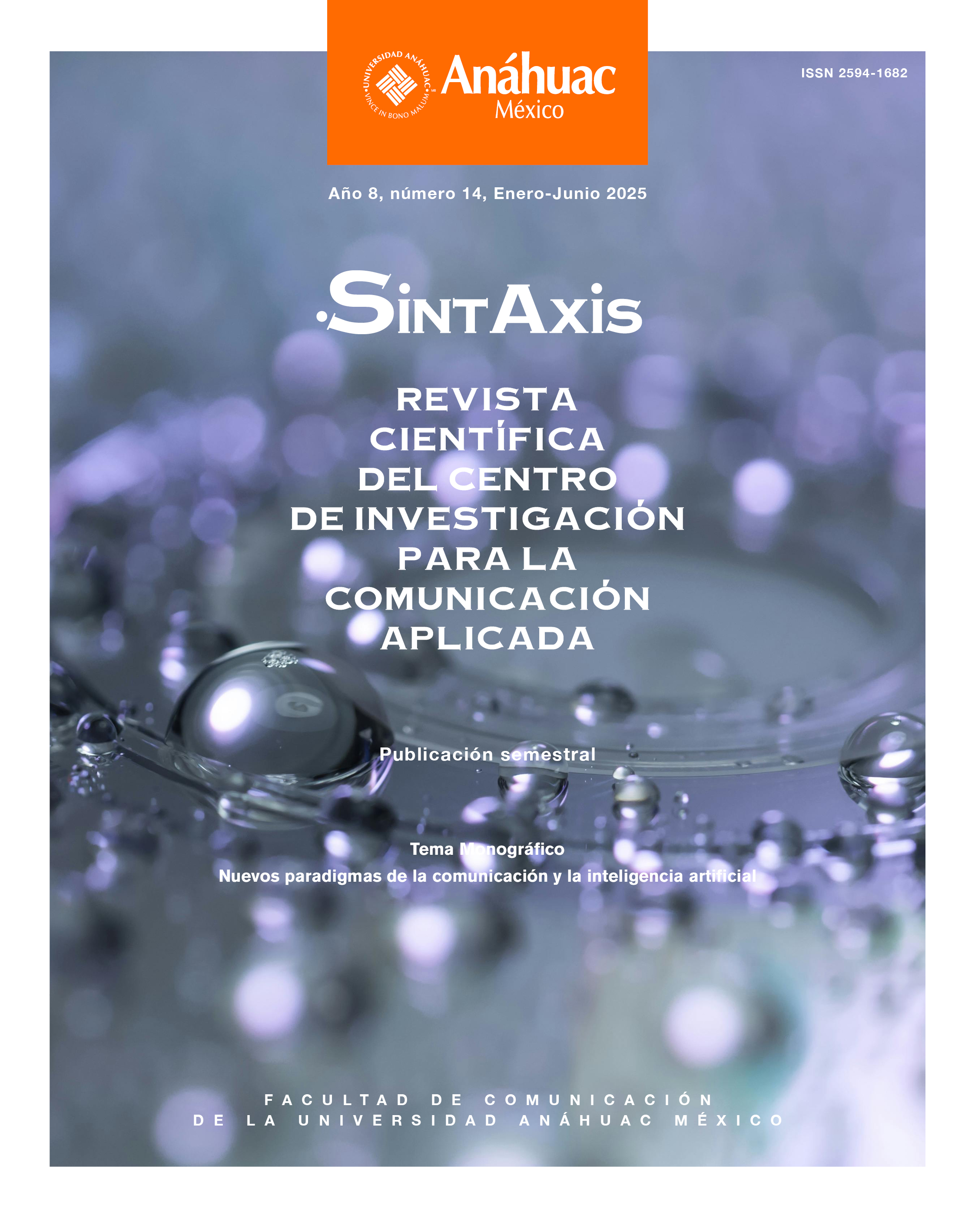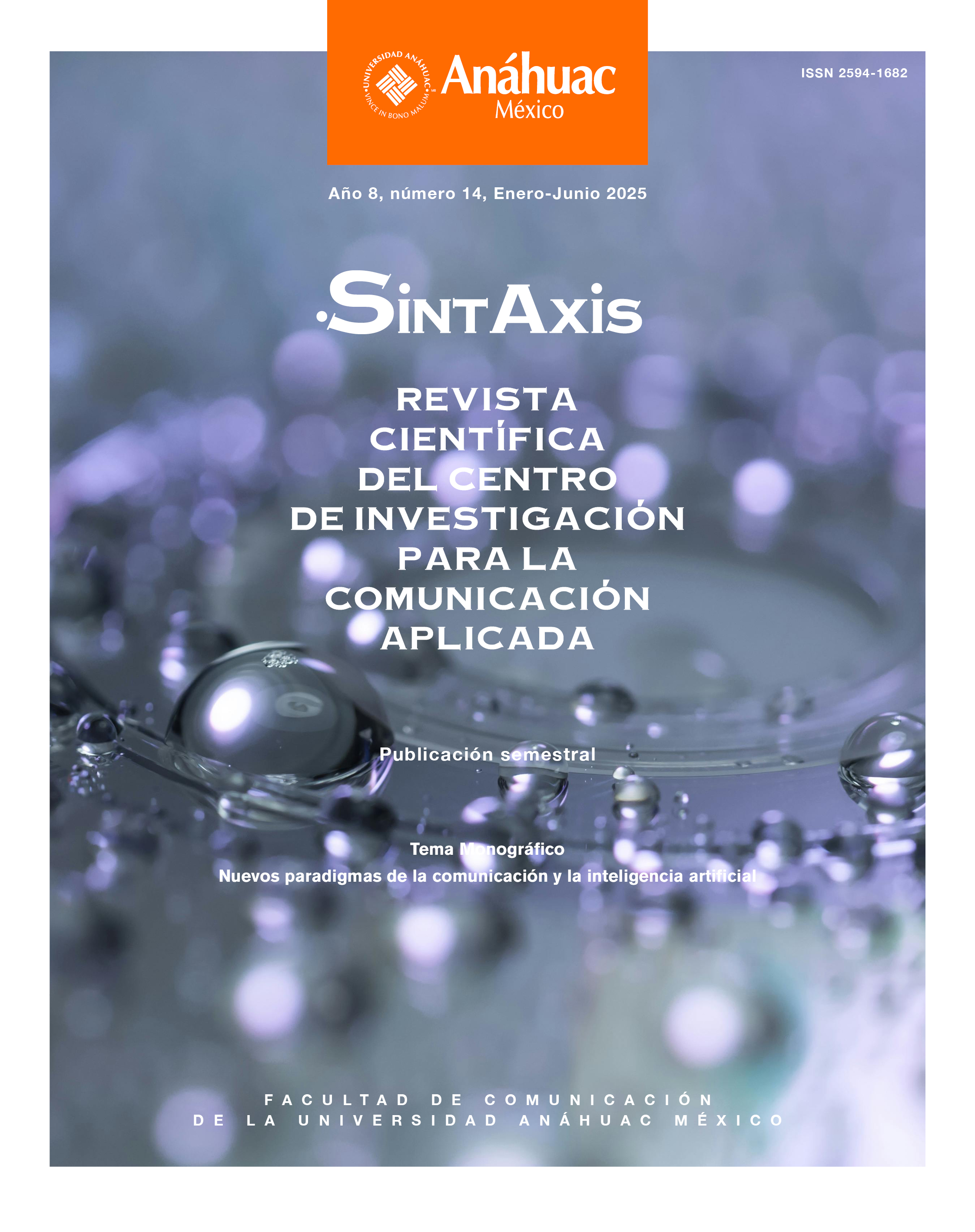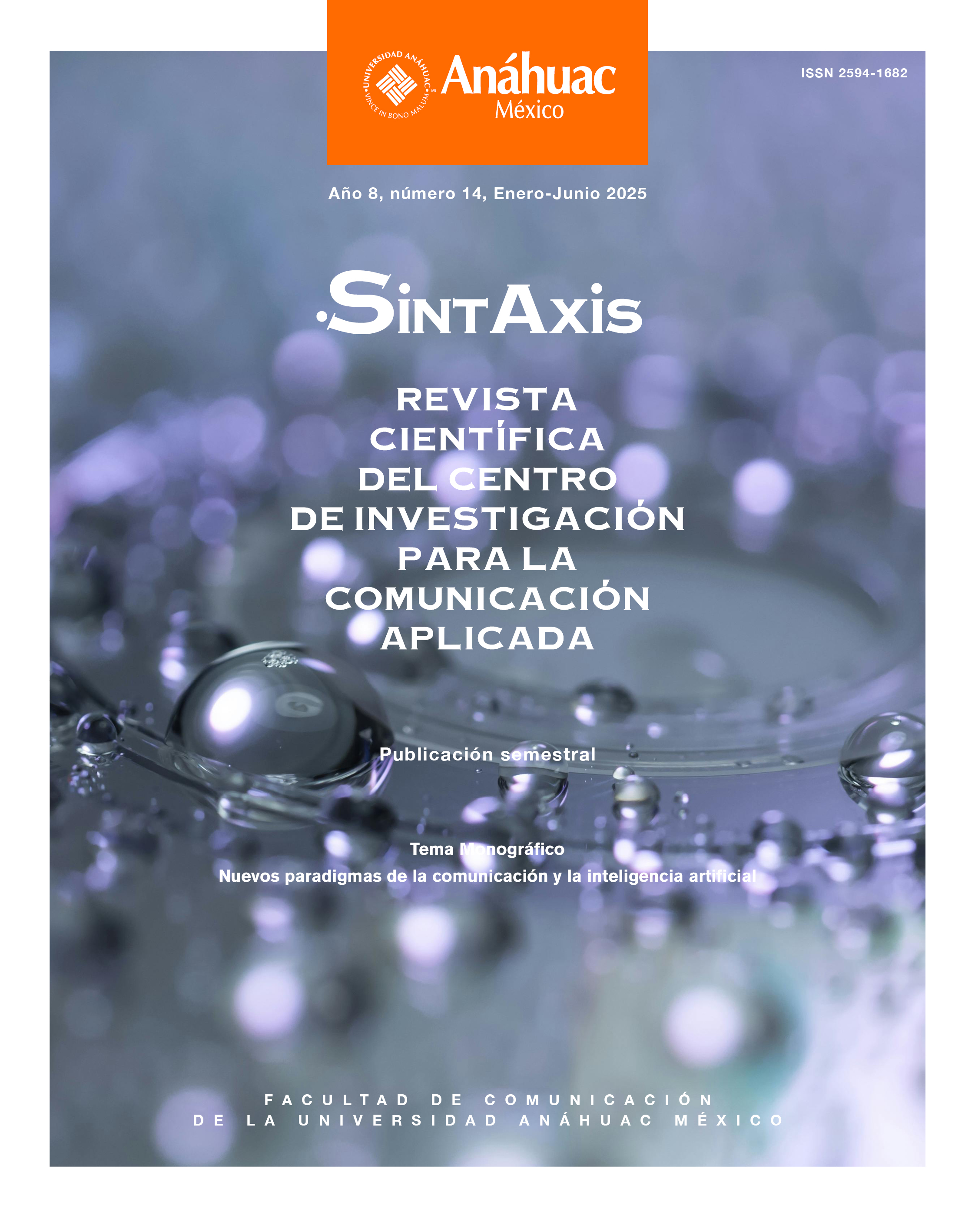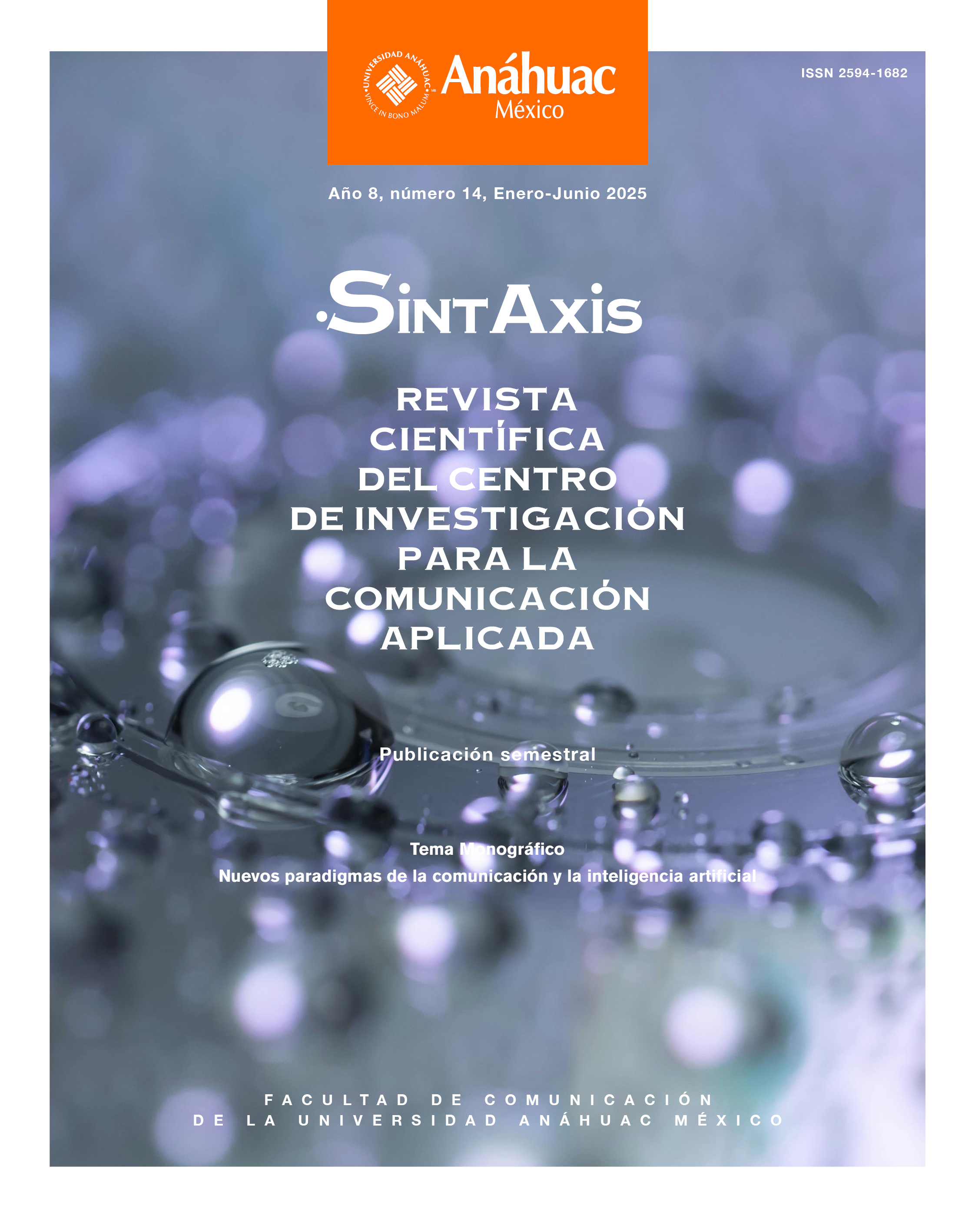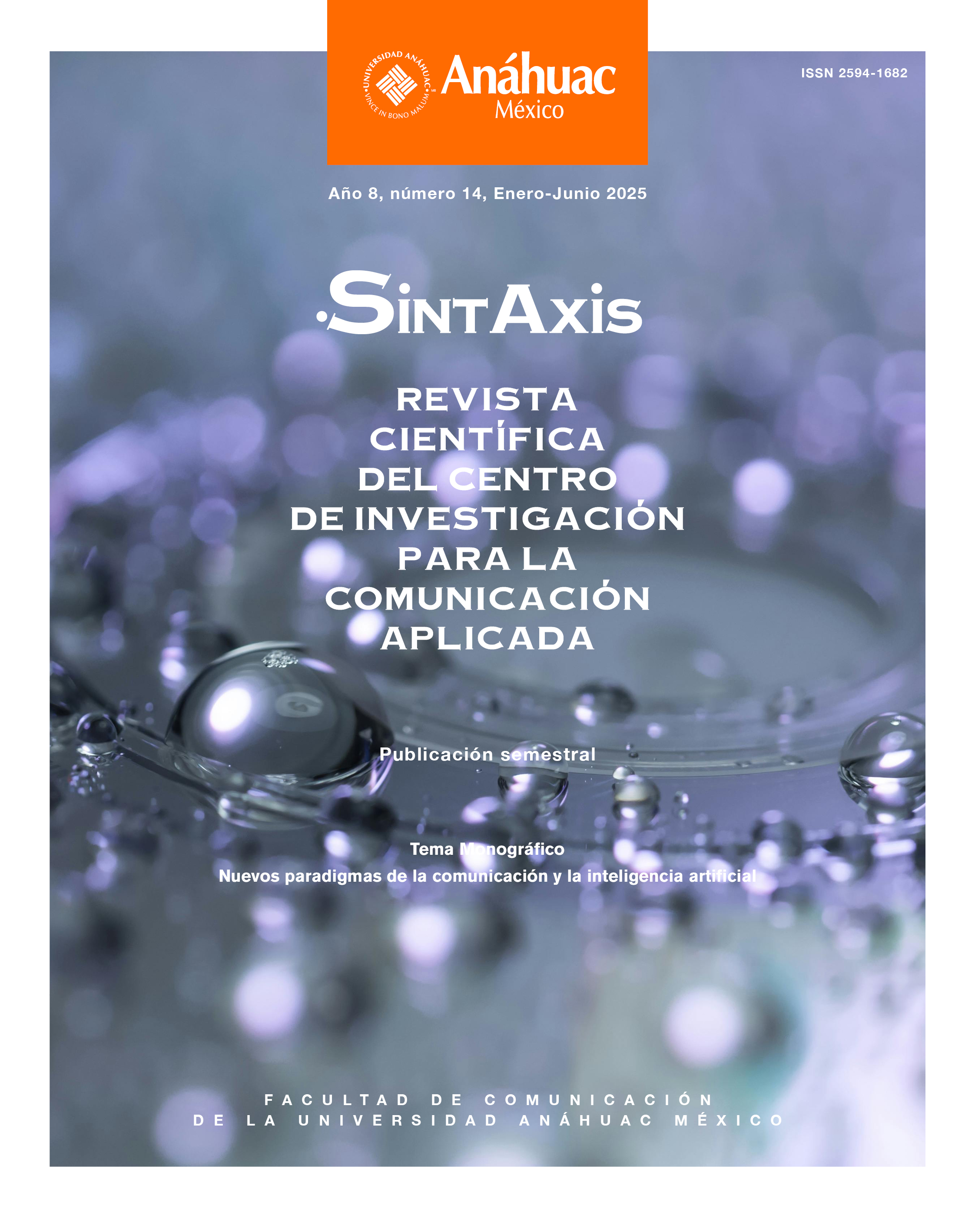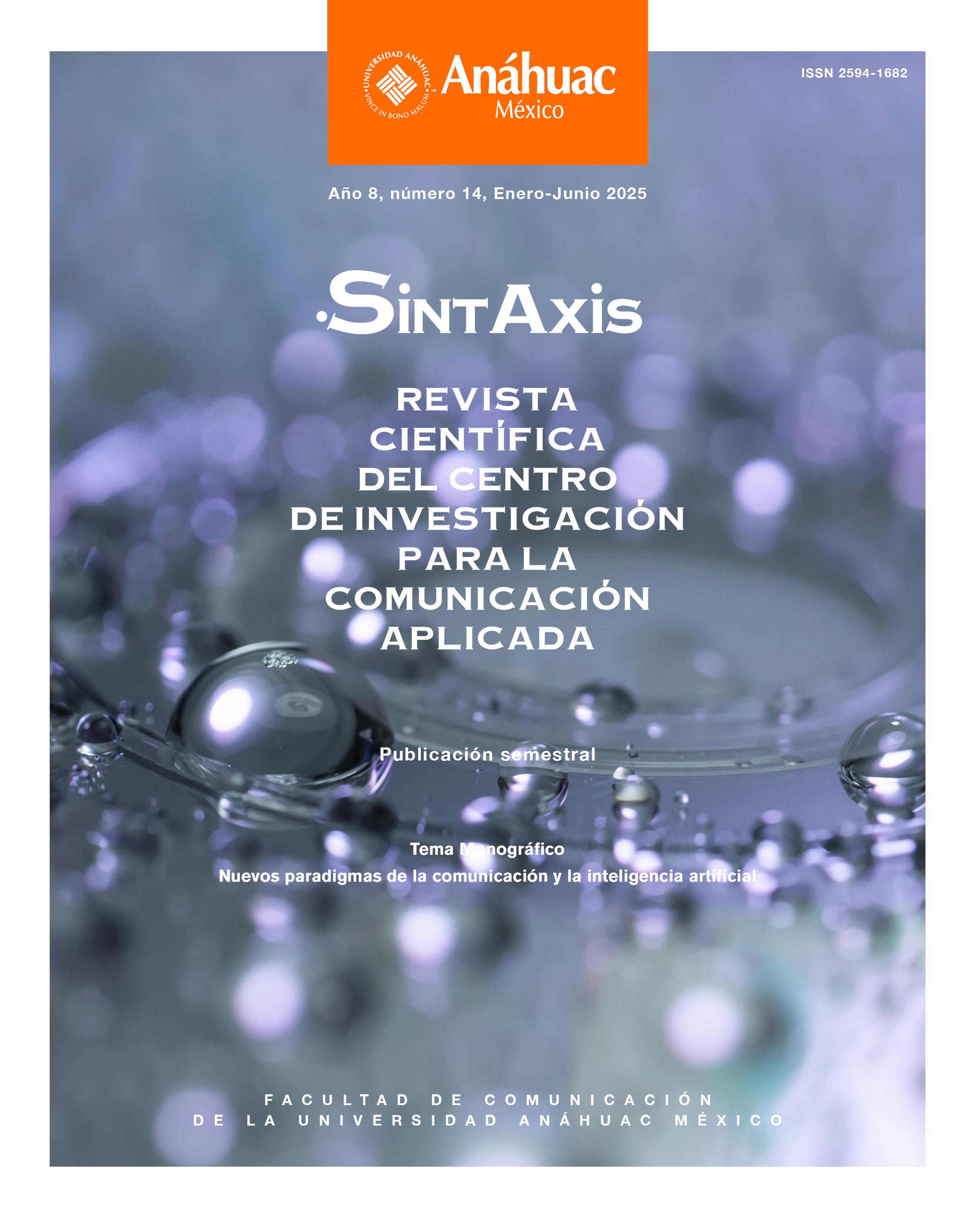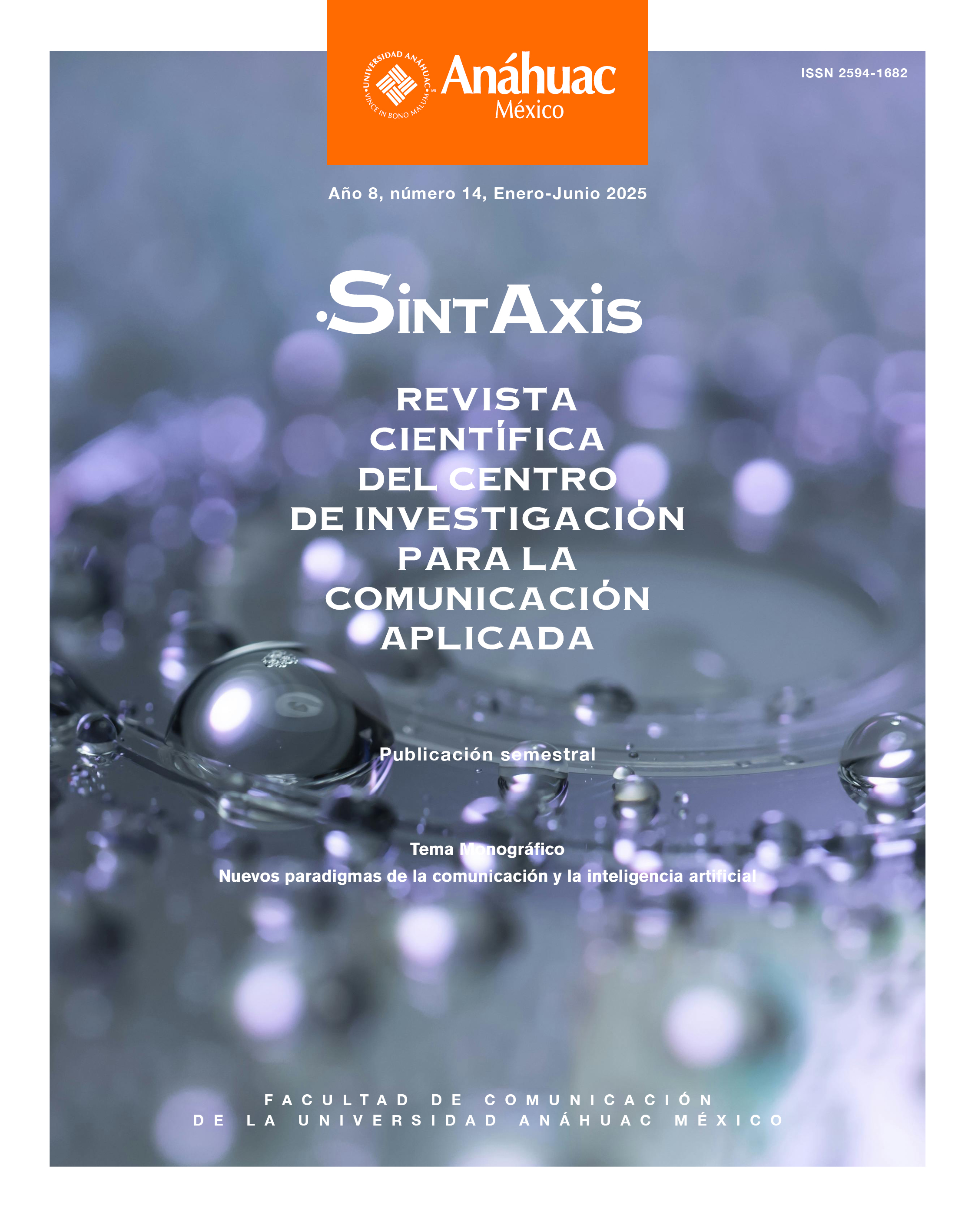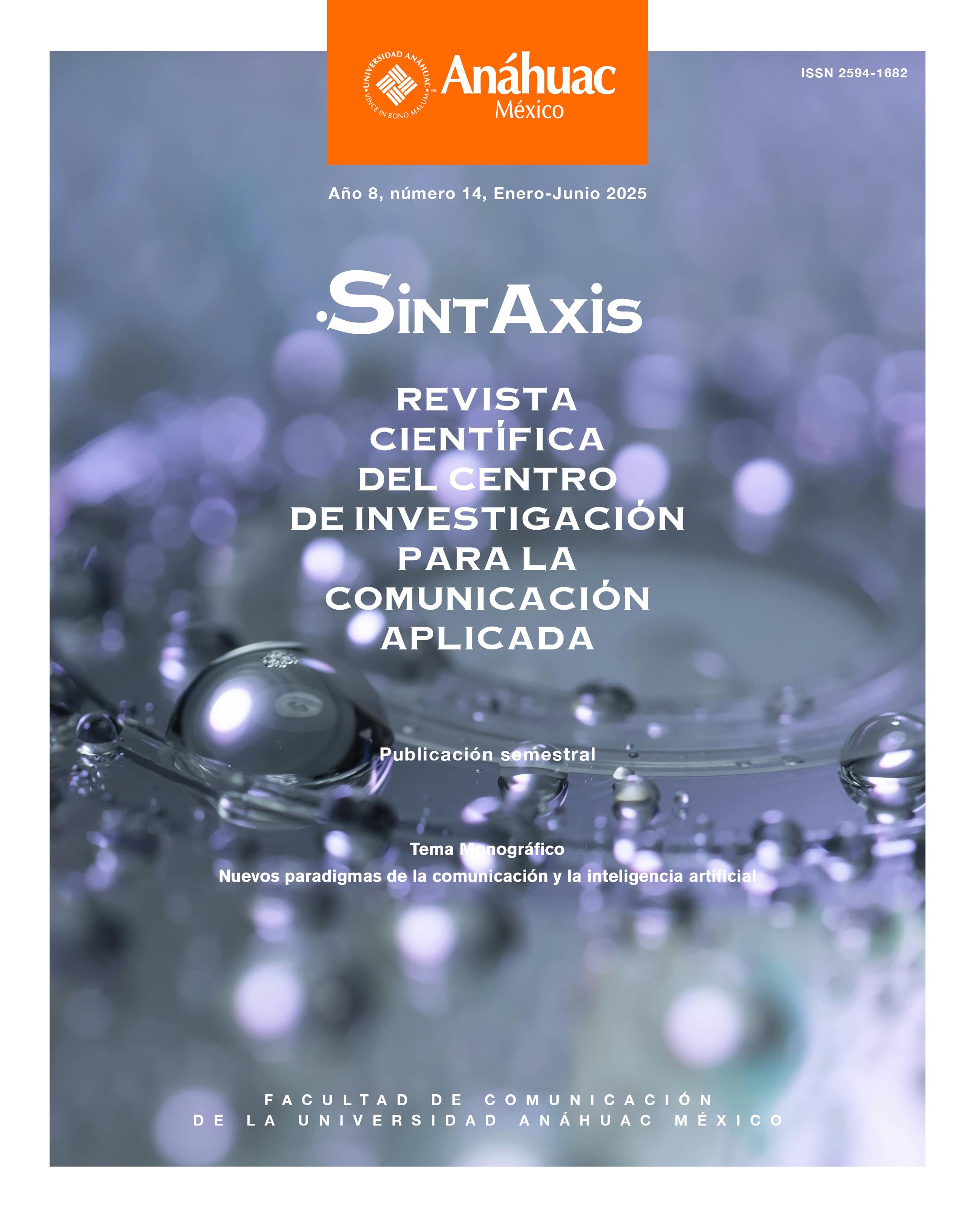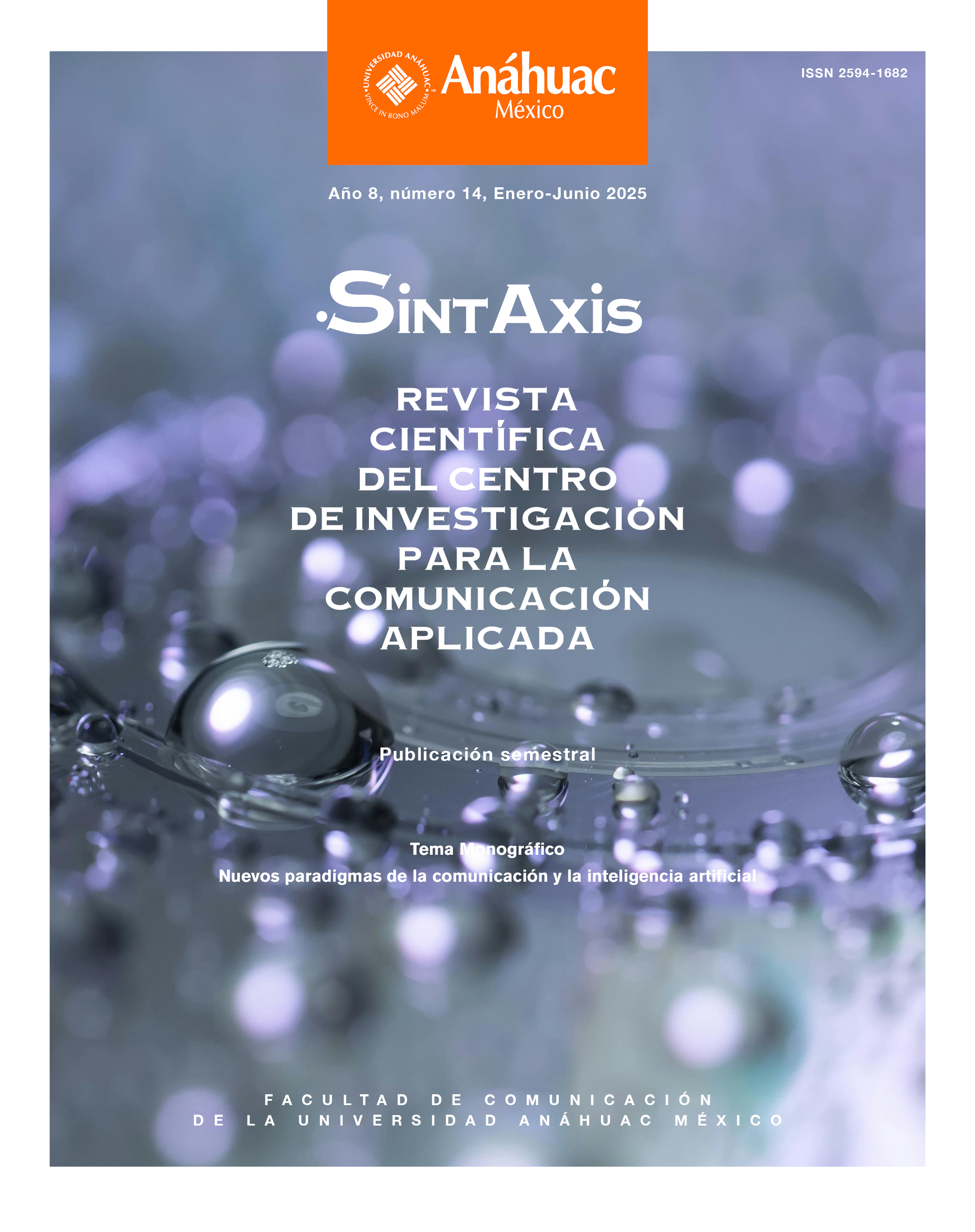Sintaxis. Revista científica del Centro de Investigación para la Comunicación Aplicada is a publication by the Research Center for Applied Communication (CICA) of the School of Communication at Universidad Anáhuac.
It is issued biannually and is aimed at researchers, academics, professionals and communication scholars.
The magazine’s mission is to publish articles originating from the work carried out by researchers around topics of interest for the development and improvement of society, culture, democracy, technology, innovation, institutions, organizations; also that they contain a communicative view set on social reality where knowledge and the views of different disciplines may converge, but highlighting the essence of communication, which emerges from each problem that is researched.
Current Issue
No. 14 (2025): Nuevos paradigmas de la comunicación y la inteligencia artificial
It is a pleasure to present this 14th issue of our scientific journal Sintaxis, which focuses on "New paradigms of communication and artificial intelligence." This issue brings together a series of contributions that address fundamental topics in communication sciences, highlighting critical approaches and innovative perspectives on current social and technological transformations based on artificial intelligence (AI).
Communication is a mediating process between people in which technology plays a complex role. On the one hand, we are talking about a tool that allows the transport and expansion of information and knowledge; on the other, it is a tool that structures forms of interaction. The expansion of knowledge has by far been the main utility of technology, while previously there was only one form of general structure for interactions based on commentary, opinions, and the analysis of information. A conversation was then generated based on the content conveyed by information media. However, with the recent expansion of AI, we are facing a new reality where it plays other roles. It no longer just expands and structures conversations, but also interacts as a generator of information and visual content.
The first article in this issue is titled, "Artificial Intelligence and Gender Equity. A Historical Perspective on Cultural Biases and Their Impact on the Human Relationship with Information and Communication Technologies."
The second article is titled "Crisis Management in the Context of Brazilian Public Communication: A Look at the Inclusion of Uncertainty in Research."
The third article is titled "Digital Capitalism and Universities: A Reflection on the Educational Risks of Profit-Driven Technology Use."
The fourth article is titled "Artificial Intelligence in Education: Transformation or Infoxication? A Critical Analysis of the New Educational Frontier."
The fifth article is titled "Rescuing History: Communication for Innovation and Awareness in the Restoration of Mexican Monumental Heritage through Artificial Intelligence."
The sixth article, "Ethical and Legal Challenges in the Use of Artificial Intelligence (AI)."
The seventh article discusses how the work of Juan Rulfo, particularly The Burning Plain and Pedro Páramo, uses the notion of aridity to represent poverty and desolation, both in geographical and emotional terms. The article is titled: "The Notion of Aridity in the Work of Juan Rulfo and the Paradox of Mexico's Megadiversity."
Two book reviews follow:
The first book reviewed is titled "Margins of Communication: Ethical Constitution of Intersubjectivity," by Rogelio Del-Prado-Flores. The review was written by Rebeca-Illiana Arévalo-Martínez.
The second book reviewed is titled "Vital Technologies. Thinking about Digital Cultures from Latin America," by Edgar Gómez Cruz. Enrique Iturralde is responsible for the review.
Published: 2025-04-03

